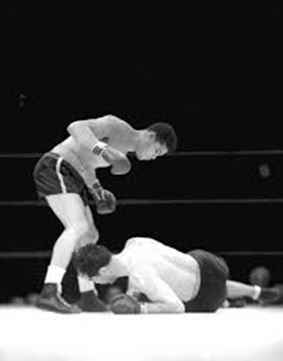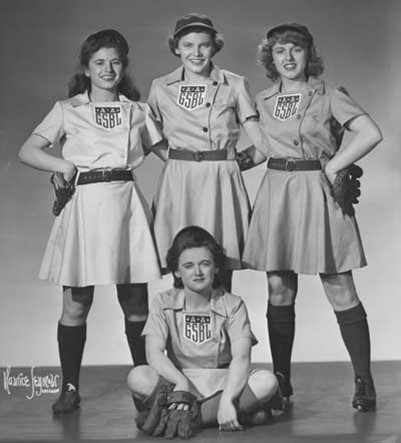
The recent cancellation of several college football‘s bowl games and other athletic competitions, due to the current Covid epidemic and the need for social distancing, brings to mind WWII and it’s effects on American sports. In the 1930s and 40s baseball, college football, and boxing were amongst America’s favorite spectator sports.
One of the most famous sport contests, that came to symbolize world politics actually predated America’s entry into WWII – the boxing rematch of the “Brown Bomber” Joe Louis and German fighter, Max Schmeling. This fight, like no other, came to symbolize America’s fight for freedom. Schmeling, who had become the poster boy for the Nazi regime and Hitler’s propaganda around race and religion since the pair’s first bout in 1936, had beat Louis in their first match. When the two champions met again on June 22, 1938 over 70,000 fans poured into New York’s Yankee Stadium, while another estimated 70 million Americans tuned into the bout on radio. The fight, which took place just months after Hitler invaded and took control of Austria, lasted only 2 minutes and 4 seconds, with Louis knocking Schmeling to the mat three times before Louis was declared the winner. This victory symbolized America’s determination to win over evil, which would be tested again December 7, 1941.
College football was another major spectator sport in the 1930s and 1940s. (What would become the NFL was started in 1920 but hadn’t become America’s favorite sports entertainment yet.) When the Japanese attacked Pearl Harbor less than a month before college football’s oldest bowl game – the Rose Bowl, American sports seemed under fire. Up until 1942, the Rose Bowl had been played in Pasadena, California every January since 1916, but after the attack, was now in peril of being cancelled. The Rose Bowl committee and others feared that holding such a large event along the west coast, was too dangerous. Thankfully, just before the game between Oregon State and Duke was cancelled, the coach of Duke University offered to host the game in their stadium. The Tournament of Roses Committee agreed to relocate and with only two weeks to prepare, the contest was moved to Durham, North Carolina. Despite the stadium’s seating capacity being increased from 34,000 to 56,000 by borrowing bleachers from two nearby colleges, tickets for this historic game sold out in three days. Duke’s Blue Devils were favored to win what was now a hometown game, but Oregon State pulled off a major upset, winning 20 to 16. This was the only Rose Bowl not played in Pasadena until 2021, when the outbreak of Covid-19 resulted in California banning attendance at sporting events and that year’s Rose Bowl game being played in the AT&T Stadium in Arlington, Texas instead.
During WWII nearly every American sports team lost players, as well as coaches, referees and other team members, as the men were drafted or joined the military, but only one sport advanced women’s athletics – American baseball. As thousands of major and minor league players left the baseball field for the battlefield there was a huge gap in all the leagues, as baseball began to lose its audience. So in 1943 William K. Wrigley Jr., owner of the Wrigley Chewing Gum Company and the Chicago Cubs baseball team, formed the first women’s professional league. He believed the novelty would bring fans back to the ball parks. The new All-American Girls Professional Baseball League, which began with just four Midwestern teams, was a combination of baseball and softball (the pitcher’s mound was only 40 feet from home plate, rather than 60 feet, and the ball was thrown underhanded).
Over 300 women from across the US and Canada showed up in Chicago for the first try-outs, competing for just 60 spots. Eventually over 500 women played in this league that grew to ten teams. The All-American Girls Professional Baseball League filled the gap left by the male Major League Baseball and by 1943 over 900,000 fans were packing the stands. But just like Rosie the Riveter (the women who worked in war-production factories and other essential jobs on the home front), these women athletes were seen as a temporary measure. Players in the “lipstick league” were expected to maintain their femininity as they would be returning to their traditional female roles after the war ended. The impractical uniforms, which were designed by Wrigley’s wife, were basically a one-piece, above-the-knee dress. They were difficult to play in and gave no protection to the player’s legs, but helped shape the feminine image of the ball players. The women were also required to attend charm classes and follow a strict set of rules on conduct as well as appearance. But the women played hard and felt they were helping the war effort by keeping up morale. As Lavonne “Pepper” Paire, a star catcher in the AAGPBL, said later, “People may have come out the first time just for laughs . . . but they kept coming back — and that was because we played good baseball.”
To learn more about the AAGPBL click on:
www.history.com/news/womens-baseball-league-world-war-ii

First players signed in 1943
Standing, L-R: Clara Schillace, Ann Harnett and Edie Perlick.
Seated: Shirley Jameson.
(From Northern Indiana Center for History Collection.)
